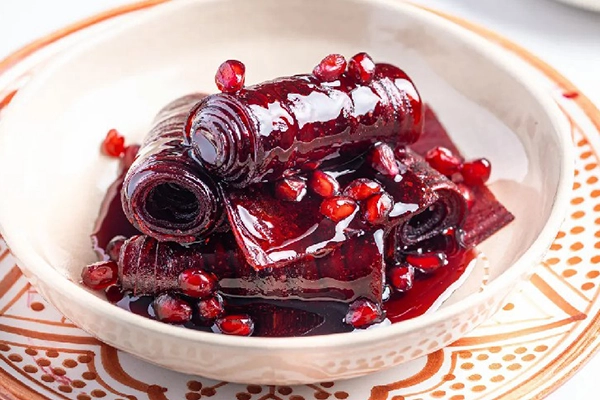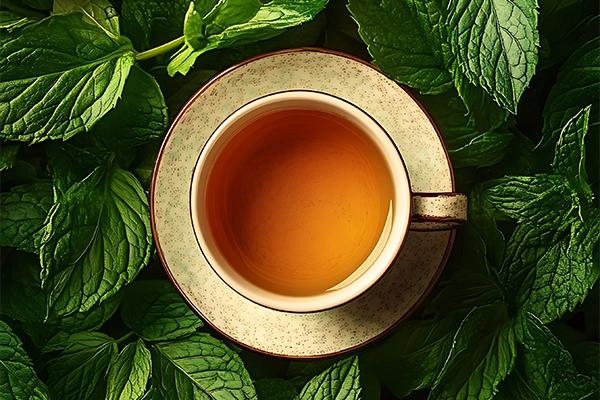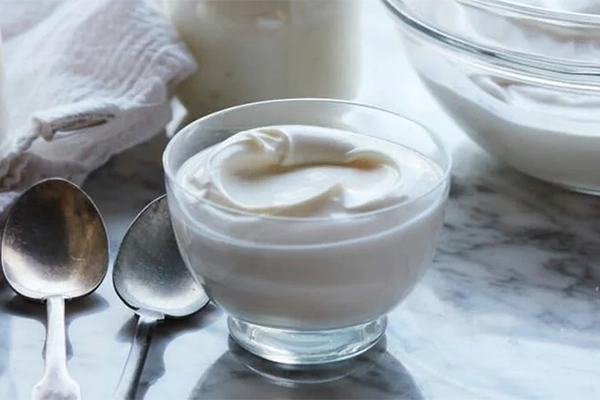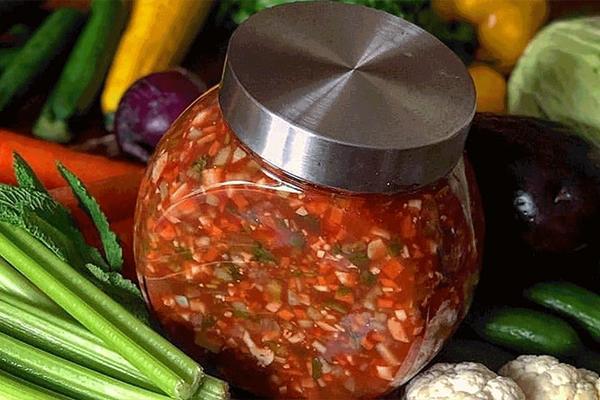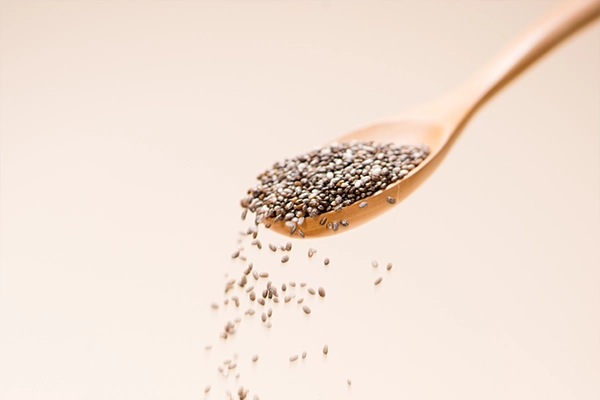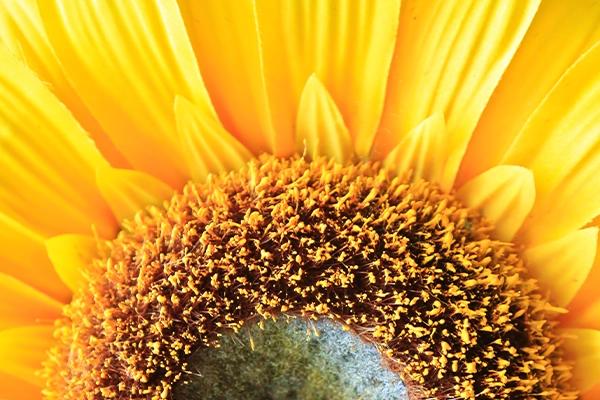Today, Iran has managed to attract global attention. Undoubtedly, the growth of various arts until today is indebted to this ancient civilization, which has placed Iran among the world’s best in several creative fields including pottery, calligraphy, weaving, and painting. In this article, we introduce the most prominent Iranian handicrafts that are recognized worldwide and represent the ethnic and national culture of this country. Iranian handicrafts are often defined as “the use of art by people’s hands with simple tools and local raw materials, resulting in the creation of an artwork.” There are numerous differences between handmade goods and modern products. These Persian handicrafts are not only different from other goods in terms of production methods, but they also help enthusiasts of this art to cultivate a particular attitude. Iran, with its rich cultural background and long history, has played an important role in the development of regional handicrafts throughout the ages and up to the present day. This has led to the recognition of 3000 different types of Persian handicrafts at the global level.
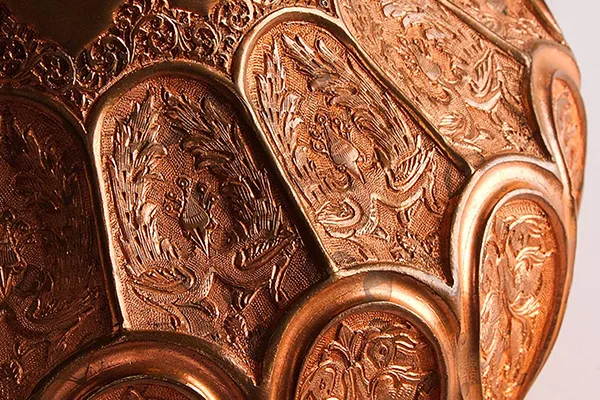
Ten of the most important Iranian handicrafts
Carpet weaving
The art of weaving handmade carpets with complex designs and patterns .Carpet weaving, one of the most prominent Iranin handicrafts, is the art of weaving handmade carpets with complex designs and patterns. This art, which has a history of several thousand years, is recognized as a symbol of Iranian culture and identity in the world. Iranian carpets, with their variety of colors, designs, and high quality, are among the most important exports of Iranian handicrafts. The art of carpet weaving is not only an important economic industry but also plays a significant role in preserving and transmitting Iran’s cultural heritage.
2. Minakari
Minakari is one of the most delicate and intricate Persian handicrafts with a history spanning several thousand years. This Persian handicraft involves painting and enameling on metal surfaces, especially copper, using a variety of vibrant colors. Minakari artists, with great precision and skill, implement complex designs, often inspired by traditional Iranian motifs, onto the metal surface. This art not only possesses stunning visual beauty but is also considered a symbol of Iran’s rich culture and history. Today, minakari is used in the production of various decorative vessels, jewelry, and art objects, and as one of the most important Iranian handicrafts, it plays a significant role in the country’s economy and artistic exports.
3. Khatamkari
Khatamkari, a pinnacle of Persian handicrafts, exemplifies the meticulous craftsmanship involved in creating intricate geometric patterns. This Persian handicraft involves the precise cutting and inlaying of tiny pieces of wood, bone, and metal to form elaborate designs, often featuring stars, polygons, and other complex shapes. The process of Khatamkari is labor-intensive, requiring years of training and exceptional patience, making each piece a testament to the artisan’s skill. As one of the most revered Iranian handicrafts, Khatamkari not only adorns various objects but also serves as a living archive of traditional Persian geometric art, continuing to captivate art enthusiasts and collectors worldwide.
4. Ghalam zani
Ghalam zani, a revered form of Persian handicrafts, showcases the exceptional skill of artisans in creating intricate designs on metal surfaces. This Persian handicraft involves a meticulous process where craftsmen use small chisels and hammers to engrave elaborate patterns, often inspired by nature, historical events, or poetry. The art requires not only technical proficiency but also a deep understanding of traditional Iranian motifs and cultural symbolism.
The versatility of ghalam zani is evident in its application across various objects, from decorative plates and vases to jewelry boxes and religious artifacts. Each piece tells a story, with scenes from Persian literature, mythological figures, or calligraphic inscriptions delicately etched into the metal. The contrast between the engraved lines and the polished metal surface creates a captivating visual effect, making each item a unique work of art.
As one of the most cherished Iranian handicrafts, ghalam zani plays a crucial role in preserving Iran’s artistic heritage. Many master artisans dedicate years to perfecting this craft, passing down their knowledge to apprentices and ensuring the continuation of this ancient tradition. The enduring popularity of ghalam zani, both within Iran and internationally, underscores its significance not only as a form of artistic expression but also as a vital component of Iran’s cultural identity and economy.
5. Pottery and tile work
Pottery and tile work stand as cornerstones of Iranian handicrafts, with a history dating back thousands of years. This Persian handicraft encompasses a wide range of techniques, from hand-throwing clay vessels to intricately painting and glazing tiles. Iranian artisans are renowned for their mastery in creating complex geometric and floral patterns, often inspired by Islamic art and Persian mythology. The city of Isfahan, in particular, is famous for its exquisite blue and white tiles that adorn many historic buildings.
These Persian handicrafts not only serve functional purposes but also play a crucial role in preserving and showcasing Iran’s rich cultural heritage. From the iconic blue domes of mosques to the elaborately decorated interiors of historic houses, pottery and tile work are integral to traditional Persian architecture. Moreover, contemporary Iranian artists continue to innovate within this ancient craft, creating modern interpretations that blend traditional techniques with contemporary designs.
The global appreciation for Iranian pottery and tile work has made these handicrafts important exports, contributing significantly to Iran’s cultural economy and international artistic reputation. Whether adorning grand monuments or gracing humble homes, these Iranian handicrafts continue to captivate with their timeless beauty and intricate craftsmanship.

6. Kilim weaving
Weaving flat-woven rugs with geometric designs Kilim weaving, one of the oldest and most important branches of Iranian handicrafts, is the art of weaving flat-woven rugs with geometric designs and vibrant colors. This Persian handicraft, which has a history of several thousand years, is prevalent in various regions of Iran, and each region has its own unique style and designs. Kilims, as prime examples of Persian handicrafts, are very popular among domestic and foreign consumers due to their lightness, design variety, and more affordable prices compared to pile carpets. This section of Iranian handicrafts plays an important role in the rural economy and preservation of local traditions. There are various techniques in kilim weaving, including needle-woven, slit-woven, and varni, each with its own unique characteristics. Kilim weaving is not only an art but also a reflection of the culture and history of different regions of Iran and plays an important role in preserving and transmitting the country’s cultural heritage.
7. Malileh-kari
Malileh-kari, a distinguished form of Iranian handicrafts, showcases the exceptional skill of artisans in manipulating fine metal threads to create intricate jewelry designs. This Persian handicraft involves twisting, plaiting, and soldering delicate silver or gold wires to form complex patterns, often incorporating traditional motifs. The resulting pieces are not only stunning examples of Persian handicrafts but also demonstrate the fusion of ancient techniques with contemporary designs. Malileh-kari’s popularity extends beyond Iran’s borders, making it a significant contributor to the country’s cultural and economic landscape in the realm of fine jewelry and decorative arts.
8. Tazhib
Decorating book margins and manuscripts with gold and bright colors . Tazhib, the art of decorating book margins and manuscripts using gold and bright colors, is one of the most delicate Iranian handicrafts. This art, which is closely related to calligraphy, is used in decorating Qurans and precious books. Tazhib, as a significant Persian handicraft, plays an important role in preserving and transmitting Iran’s cultural and artistic heritage. Iranian handicrafts, including kilim weaving, Malileh-kari, and Tazhib, showcase the rich artistic traditions of Iran. These Persian handicrafts not only demonstrate the skill and creativity of Iranian artisans but also contribute significantly to the country’s cultural identity and economy.

9. Termeh weaving
Traditional fabric weaving with complex and colorful patterns Termeh weaving, one of the most precious and delicate branches of Iranian handicrafts, is the art of traditional fabric weaving with complex and colorful patterns. This Persian handicraft produces soft and beautiful fabric, often woven from a combination of wool and silk, and is world-renowned for its high quality and unique designs. Yazd termeh is one of the most famous types of this art in Persian handicrafts and is recognized as one of Iran’s cultural symbols. This delicate art is used in producing shawls, scarves, tablecloths, and curtains, and is very popular as a valuable gift. Weaving termeh requires high skill and precision, and termeh weavers intricately apply traditional and modern designs onto the fabric. In addition to its artistic value, this Iranian handicraft plays an important role in the economy and job creation in regions like Yazd.
10. Moshabbak-kari
Creating intricate designs by cutting wood or metal .Moshabbak-kari, one of the delicate and widely used arts in Persian handicrafts, involves creating complex and beautiful designs by cutting wood or metal. This Persian handicraft, which has a long history in Iran, is used in making various decorative items, windows, and partitions. Moshabbak artists use precise tools to implement geometric and arabesque designs on raw materials. Moshabbak-kari, as one of the important branches of Iranian handicrafts, plays a significant role in traditional and modern architecture, and its products are very popular among Iranian art enthusiasts. These Persian handicrafts play an important role in Iran’s culture, art, and economy. Iranian handicrafts, with their ancient history and remarkable diversity, showcase a valuable treasure of this land’s art and culture. These arts, from carpet weaving to minakari, not only manifest beauty and delicacy but also play a vital role in Iran’s economy and preservation of cultural heritage. Iranian handicrafts are a bridge between the past and present that strengthens national identity and is passed on to future generations. These arts also act as Iran’s cultural ambassadors in the world, drawing global attention to the country’s cultural richness and holding a special place in global markets.

